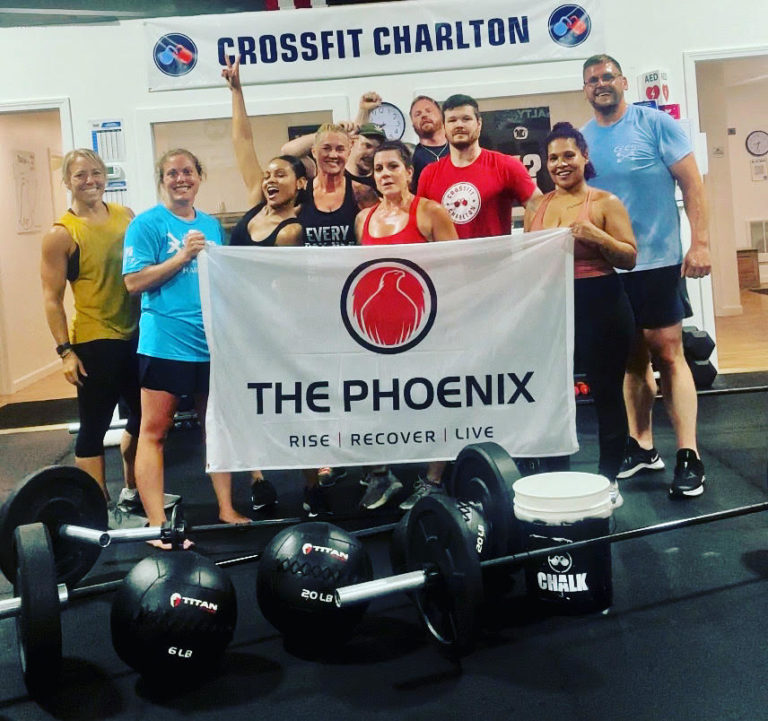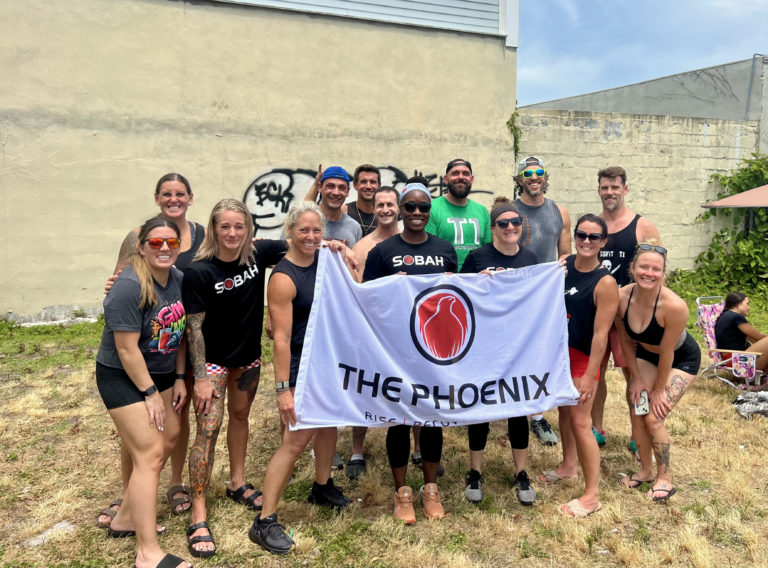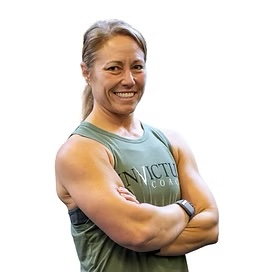To most, CrossFit looks like just another workout. Exhausted athletes collapsed on the floor, drenched in sweat after an intense workout of burpees, heavy barbell lifts, and calories on the rower.
But for some, CrossFit is a lifeline. It’s not merely a form of exercise — for those suffering from an addiction, CrossFit represents survival, healing, and a path to recovery.
 That’s certainly what it has been for me. CrossFit has been essential in my journey, and it’s why I’ve persevered.
That’s certainly what it has been for me. CrossFit has been essential in my journey, and it’s why I’ve persevered.
My story is not one of “hitting rock bottom.” I began a steady decline due to a series of challenging life events, including the sudden loss of my father. I didn’t lose my job, my license, my children, or my marriage, but I did lose myself in daily drinking. Alcohol became my go-to solution for every emotion: happiness, sadness, excitement, and anxiety. I mainly drank alone at home, but my alcohol tolerance got to be so high that I could consume large quantities without appearing intoxicated to most people.
This went on for many years. I gained a significant amount of weight during this period, which contributed to my feelings of depression. I was drunk almost every night, and it wasn’t sustainable. The feeling of waking up hungover every morning was neither normal nor healthy, and I knew I didn’t want to continue living that way. My sobriety journey started with Alcoholics Anonymous. I used Weight Watchers to lose weight. But I still needed a way to channel my energy and emotions that would build me up instead of tearing me down.
I discovered group exercise early on in my recovery, and it helped me identify that exercise would relieve my anxiety and improve my mood. Once I began feeling better from regular exercise and eating well, my husband’s enthusiasm for CrossFit piqued my curiosity. I tried a class and was instantly hooked.
Structure and Discipline
The structure and discipline of CrossFit workouts were unlike any group exercise class I had ever taken. CrossFit required my complete focus. I found structure and consistency in the varied workouts, which also adhered to a common standard for all movements and athletes. I enjoyed tracking my progress by counting reps and logging weights. This structured environment pushed me to my physical limits in a healthy way, allowing me to thrive in contrast to the chaos where my addiction flourished.
Physical Healing, Mental Transformation
CrossFit not only challenged me physically, but it also transformed me mentally.
In the beginning, the workouts were extremely challenging. The physical and mental demands were so great that I sometimes felt like giving up. But instead of giving in to the temptation to make my life easier, which I learned how to do quite well by drinking, I proved something bigger to myself every time I pushed through, lifted heavier, moved faster, or endured longer. I learned I could do hard things. Yes, the intense workout was challenging, but it was also manageable. This experience taught me that I could endure other discomforts without resorting to alcohol as an escape.
This lesson wasn’t just learned in the gym. It followed me into the difficult times in my life — the painful emotions, the tough days, the moments when I was tempted to take the easy way out. CrossFit trained my mind to persevere and fight. It showed me that everything would work out. And if it wasn’t OK yet, it’s because it wasn’t over.
“Everything will be okay in the end. If it’s not okay, it’s not the end.” – Disputed Origin
Community and Belonging
Despite having an extensive social network, my addiction led to isolation, and I primarily drank alone. Quitting drinking resulted in further isolation as I fiercely protected my sobriety. This newfound sobriety also changed my perspective on addiction and substance use. While drinking had fueled feelings of loneliness, sobriety brought about a sense of being misunderstood. CrossFit ultimately shattered this illusion of misunderstanding.
The gym is a supportive community that focuses on effort, celebrates small victories, and values me beyond my past behaviors or labels outside the gym. My present gains are more important than my past failures. The only thing that matters is that I consistently show up and put in the effort to get better each day. Through CrossFit, I’ve found a sense of belonging, one of the most potent antidotes to relapse I’ve experienced.
A New Identity
 People don’t like being labeled as addicts. As one, I certainly do not identify as one. Thanks to CrossFit, my new, preferred label is “athlete.” I was not only lifting weights but also lifting the weight of my old story, and creating a new and empowering self-narrative to carry through every aspect of my life.
People don’t like being labeled as addicts. As one, I certainly do not identify as one. Thanks to CrossFit, my new, preferred label is “athlete.” I was not only lifting weights but also lifting the weight of my old story, and creating a new and empowering self-narrative to carry through every aspect of my life.
I discovered CrossFit at six years of sobriety, and it has been a life-changing addition to my recovery toolbox, aiding me in maintaining sobriety. I continue to do CrossFit four to five days a week. I have obtained my Certified CrossFit Level 3 credential and currently coach 16 to 20 classes per week. I volunteer with The Phoenix Program, which provides free CrossFit classes to individuals who have maintained 48 hours of continuous sobriety. Today, I am 15 years sober.
I share my story openly, not out of pride or boastfulness, but out of empathy and understanding. I know there is someone else, at this very moment, standing exactly where I once stood — lost, adrift, and desperate for something, anything, to hold onto.
 CrossFit is more than just a workout for me; it is a lifeline. It is a community of people who welcome me with open arms, support me through my struggles, and celebrate my victories. It is a place where I can push myself to my limits, discover my inner strength, and find a sense of belonging.
CrossFit is more than just a workout for me; it is a lifeline. It is a community of people who welcome me with open arms, support me through my struggles, and celebrate my victories. It is a place where I can push myself to my limits, discover my inner strength, and find a sense of belonging.
Recovery is found in consistently showing up, even when you’re not the strongest. It’s about taking one step, one rep, and one breath at a time. CrossFit is more than just a workout; it’s a weapon in the fight for recovery and a reminder that you can rise stronger than ever, even after being broken.
I know CrossFit may not be for everyone, and that’s OK. I’m not taking away from the value of Alcoholics Anonymous and other addiction recovery programs. But if you’re feeling lost and alone, needing something “more,” or you know someone who needs something “more,” I urge you to try CrossFit. You might find it’s just the lifeline you’ve been searching for.
About the Author

Heidi Moody is a 52-year-old Certified CrossFit Level 3 Trainer who coaches at CrossFit INVICTUS Boston. She started her CrossFit journey at 43 years old. At the time, she was overweight and had very little weightlifting experience. She lost weight and has maintained it ever since, even through perimenopause, while remaining injury-free. Moody continues to gain strength every year, proving that aging athletes don’t have to settle for getting weaker just because they age.